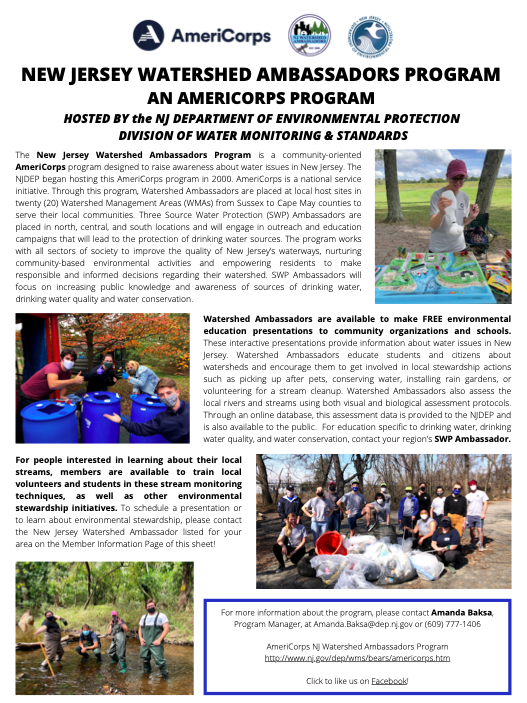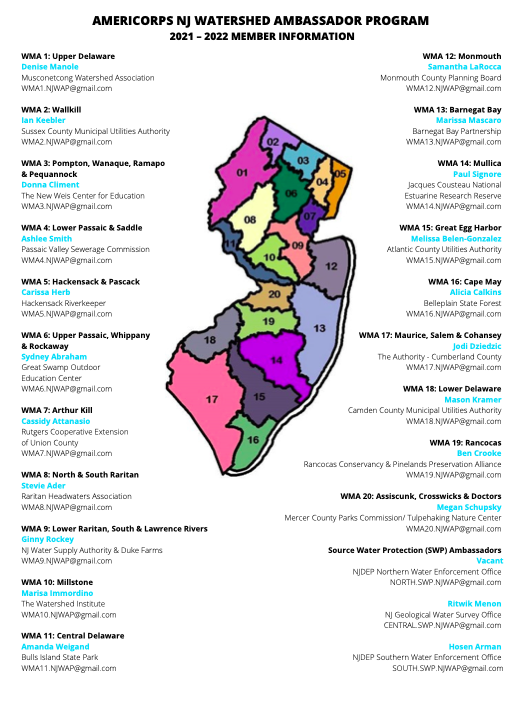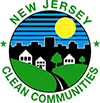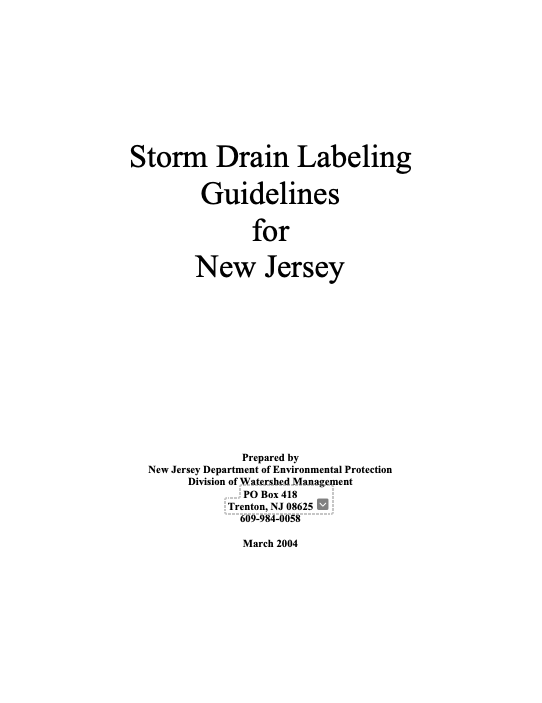Stormwater Management, Storm Drains and Watersheds
Stormwater Management
NJDEP Stormwater Management Program
The New Jersey Department of Environmental Protection oversees the Stormwater Management Program for the State. Municipalities and Counties are required to obtain stormwater permits. The purpose of the stormwater management program is to reduce the pollution impact of stormwater.
It is estimated that up to 60% of our existing water pollution problems are attributable to stormwater/nonpoint pollution. The Stormwater Management Program attempts to reduce stormwater/nonpoint pollutant contributions through the implementation of best management practices including public education.
How does this fit in with Clean Communities?
Sources of nonpoint source pollution include pesticides, pet wastes, leaves, automotive fluids, and litter. Some of the recommended strategies to reduce nonpoint source pollution from stormwater are similar to the efforts the Clean Communities Coordinators currently undertake. Some ideas for working with the stormwater management personnel in your community may include litter cleanups, stormwater stenciling and providing educational materials regarding litter and other forms of nonpoint source pollution to your residents.
It should be noted that Counties and other agencies with “highway agencies” permits are required to provide information on their litter pick up programs including the cleanup dates and amounts of litter collected. So be sure to share information on your cleanup events with your stormwater management personnel.
Municipal Excess Liability Joint Insurance Fund - Pre-Recorded Webinars
NJDEP Related Websites:
- NJStormwater.org
- Clean Water NJ - Education and Outreach Resources
- Watershed Restoration - Watershed Information Defined and Explained
- Watershed Restoration - Water Education & Outreach Resources
- Division of Water Monitoring and Standards - Bureau of Environmental Analysis, Restoration and Standards Nonpoint Source (NPS) Pollution Management Program - Nonpoint Source Pollution Explained
- Division of Water Quality, Bureau of Stormwater Permitting - Outreach Material (contains items shown below):
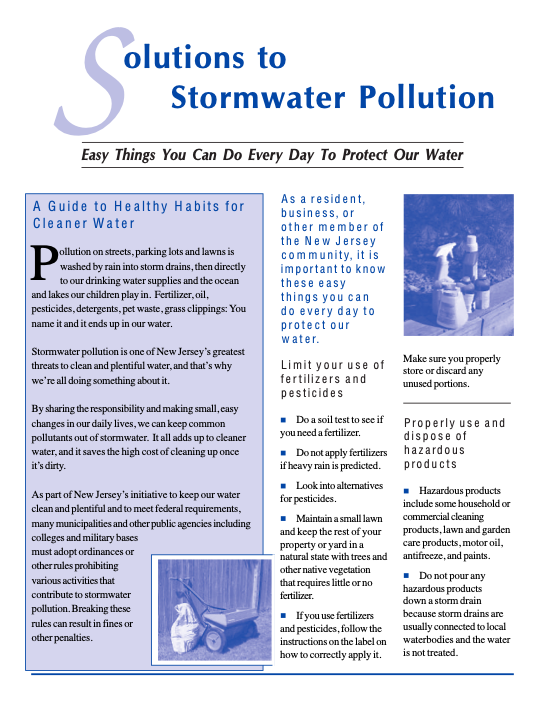 Solutions to Stormwater Pollution
Solutions to Stormwater Pollution
(2 page flyer found on NJDEP Example Website)
What's a Watershed? PDF (8 page brochure)
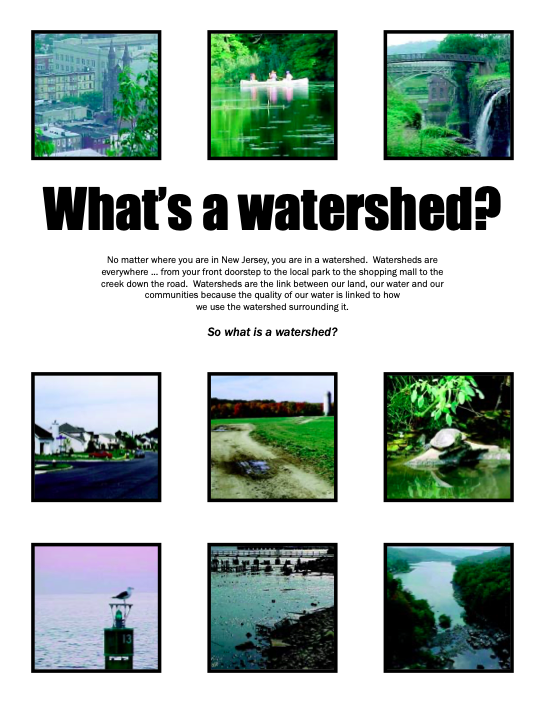
Sample Educational Materials from Counties and Towns:
Roxbury Township Stormwater Information (2 page brochure)
Somerset County Clean Water Begins With You (2 page brochure)
Galloway Township Only Rain Down the Drain (1 page advertisement)
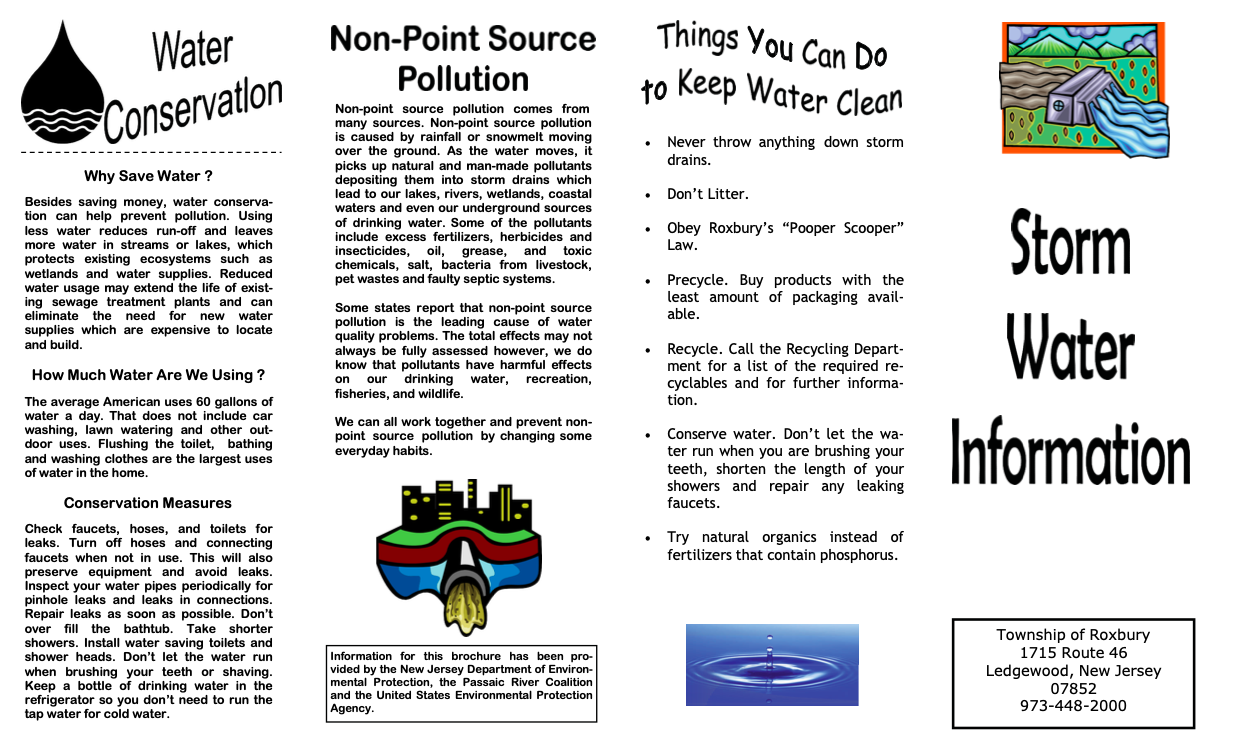
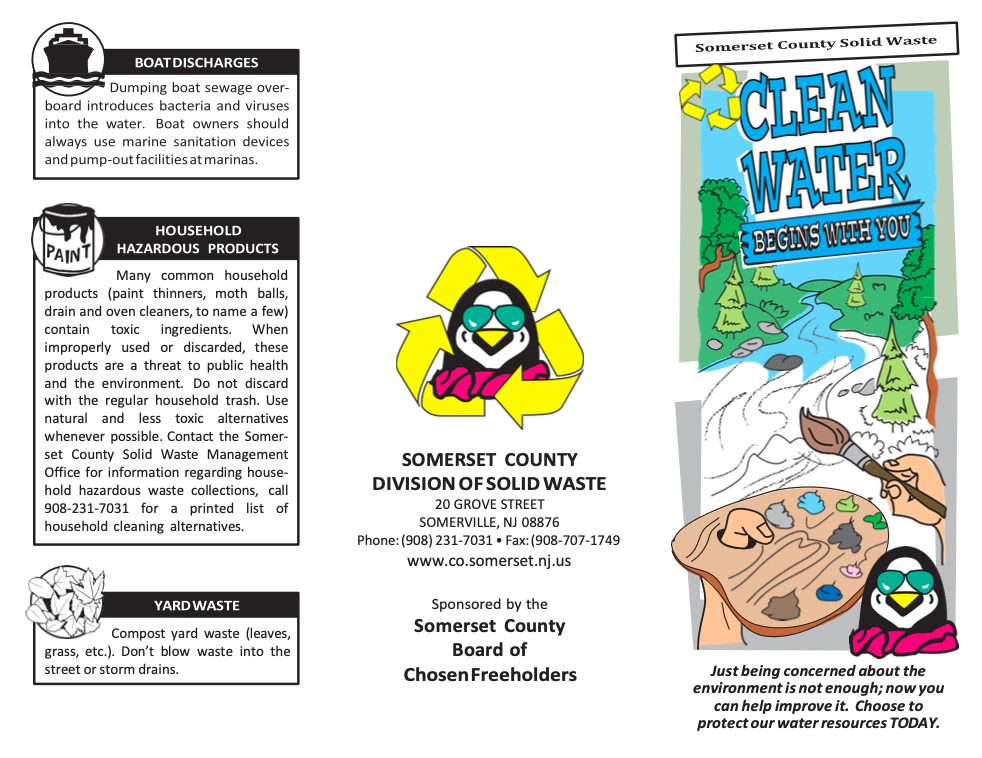
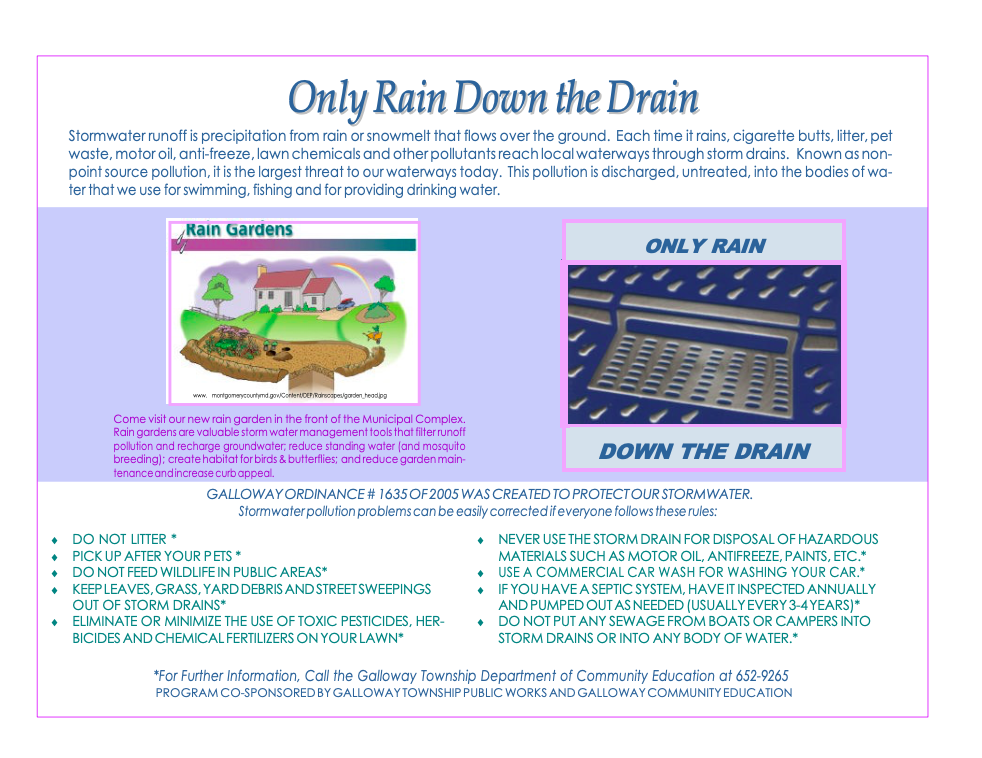
Storm Drains
See also NJCC Best Practices Storm Drain Section under Education
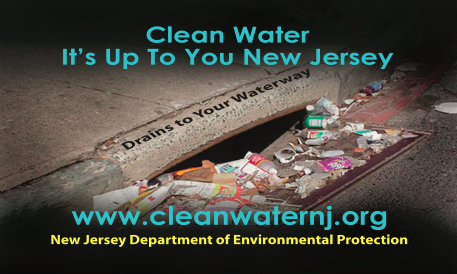
Storm Drain Labeling Guidelines for New Jersey (17 pages, March 2004) prepared by NJDEP, Division of Watershed Management
“Storm drain labeling is a great way to make people in your community more aware of nonpoint source pollution and polluted runoff.”
“Storm drain labeling serves as an educational tool to remind people about the connection between storm drains and local waterbodies.”
“Storm drain inlet labeling is also a requirement of New Jersey’s new municipal stormwater permitting program.”
Sample Educational Materials from Towns:
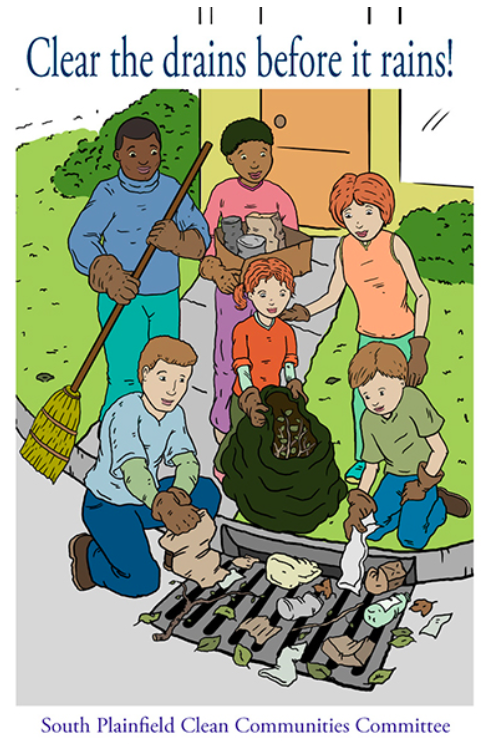 South Plainfield Borough Clear the drains before it rains! (PDF) (4 page brochure)
South Plainfield Borough Clear the drains before it rains! (PDF) (4 page brochure)
Fair Lawn Borough Storm Drain Litter (PDF) (2 page brochure)
Fair Lawn Borough Storm Drain Marker Inventory Form (1 page)
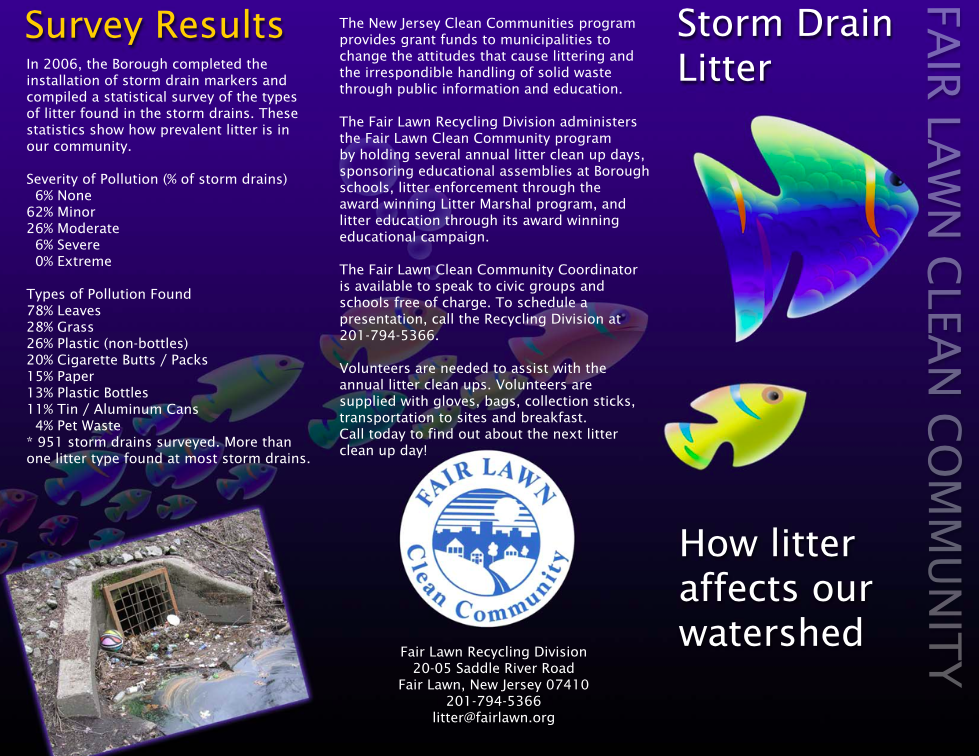
Watersheds
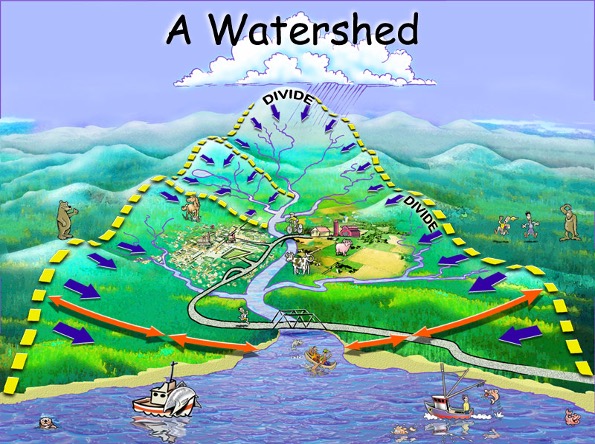
Map of New Jersey’s Watersheds, Watershed Management Areas and Water Regions
(use this map on-line to zoom in for better detail)
A watershed is an area of land that drains into a body of water such as a river, lake, stream, or bay. It is separated from other watersheds by high points in the areas such as hills or slopes. It includes not only the waterway itself but also the entire land area that drains to it. For example, the watershed of a lake would include not only the streams entering that lake but also the land area that drains into those streams and eventually the lake. Drainage basins generally refer to large watersheds that encompass the watersheds of many smaller rivers and streams.
No matter where you are in New Jersey, you are in a watershed. Watersheds are everywhere from your front doorstep to the local park to the shopping mall to the creek down the road. Watersheds are the link between our land, our water and our communities because the quality of our water is linked to how we use the watershed surrounding it.
To learn more about watersheds please visit the NJDEP Watershed Restoration site
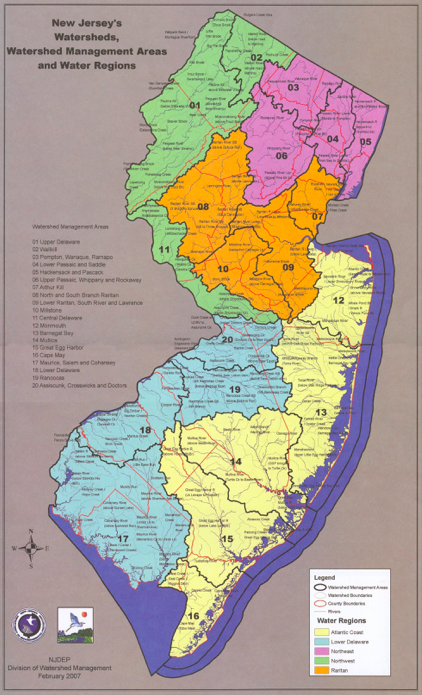 New Jersey has five watershed regions:
New Jersey has five watershed regions:
- Atlantic Coastal
- Lower Delaware
- Northeast
- Northwest
- Raritan
New Jersey has 20 watershed management areas:
01 Upper Delaware
02 Wallkill
03 Pompton, Pequannock, Wanaque, Ramapo
04 Lower Passaic, Saddle
05 Hackensack, Hudson, Pascack
06 Upper and Mid Passaic, Whippany and Rockaway
07 Arthur Kill
08 North and South Branch Raritan
09 Lower Raritan, South River, and Lawrence
10 Millstone
11 Central Delaware
12 Monmouth
13 Barnegat Bay
14 Mullica
15 Great Egg Harbor
16 Cape May
17 Maurice, Salem and Cohansey
18 Lower Delaware
19 Rancocas
20 Assiscunk, Crosswicks and Doctors
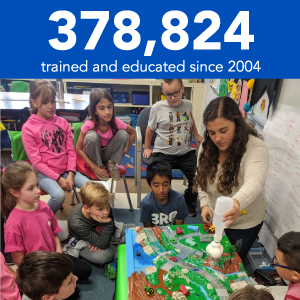 Watershed Ambassadors
Watershed Ambassadors
“The New Jersey Watershed Ambassador Program is a community-oriented AmeriCorps program designed to raise awareness about water issues in New Jersey. Through this program, Watershed Ambassadors are placed at local host sites in twenty (20) Watershed Management Areas (WMAs) from Sussex to Cape May counties to serve their local communities. Three Source Water Protection (SWP) Ambassadors are placed in north, central, and south locations and will engage in outreach and education campaigns that will lead to the protection of drinking water sources. The program works with all sectors of society to improve the quality of New Jersey’s waterways, nurturing community-based environmental activities and empowering residents to make responsible and informed decisions regarding their watershed. Watershed Ambassadors are available to make FREE environmental education presentations to community organizations and schools.”
Find Your Watershed Ambassador
Watershed Ambassador Flyer (updated for 2021-2022)
